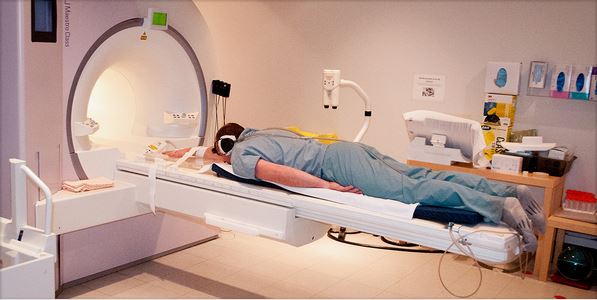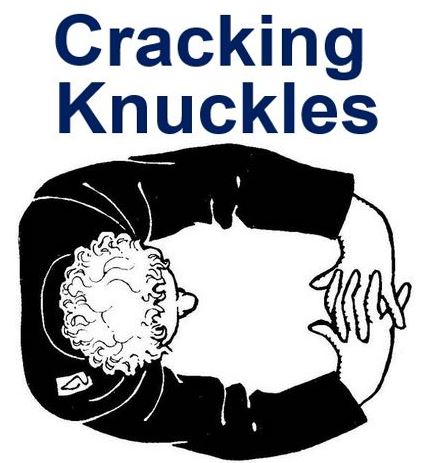Why do your knuckles make a popping sound when you crack them? Scientists have debated for decades what the causes might be, but have never been completely sure. A new study has found out what happens. The study did not determine, however, whether knuckle cracking is bad (or good) for you.
A team of scientists from the University of Alberta in Canada set out to determine what the cause was by video-recording exactly what happened within the joint with an MRI (medical resonance imaging) scanner.
Gregory Kawchuk and colleagues published their findings in the open-access journal PLOS ONE (citation below).

Volunteer Jerome Fryer connected to the MRI video setup at the Peter S. Allen MR Research Centre, University of Alberta. (Image: University of Alberta)
Team recruited the ‘King’ of knuckle cracking
The team needed a volunteer who was super good at cracking knuckles. The selected person was chiropractor Jerome Fryer, who had initially suggested reasons to Prof. Kawchuk for why cracking knuckles made a popping sound.
Fryer has a unique ability – he can crack every joint in every finger, and after the standard recuperation time, he can do it again, on demand.
“Fryer is so gifted at it, it was like having the Wayne Gretzky of knuckle cracking on our team,” said Prof. Kawchuk.
The researchers visualized ten finger joints from Fryer by inserting them one at a time into a tube attached to a cable that was slowly pulled until the knuckle joint cracked.
They captured each crack, which occurred in less than 310 milliseconds, in real time MRI video.
Cavity rapidly fills with gas
In every case, the cracking and joint separation were associated with the rapid creation of an air-filled cavity within the synovial fluid, the slippery, viscous substance that lubricates the joints.

There is no evidence that habitual knuckle cracking leads to long-term damage to the joints.
Prof. Kawchuk, who works at the University’s Faculty of Rehabilitation Medicine, said:
“It’s a little bit like forming a vacuum. As the joint surfaces suddenly separate, there is no more fluid available to fill the increasing joint volume, so a cavity is created and that event is what’s associated with the sound.”
Just before the joint cracked, the researchers also observed the presence of a white flash.
“No one has observed it before,” said Kawchuk. He thinks the occurrence is water suddenly being drawn together just before the cracking of the joint.
Prof. Kawchuk and colleagues would like to understand what happens in the joint after it pops, and what impact it might have on bone/joint health. For that, even more advanced MRI technology would be needed.
According to scientists’ calculations, the amount of force at work when we crack our knuckles has enough energy to damage hard surfaces. However, research has also shown that habitual knuckle cracking does not appear to result in any long-term harm.
“The ability to crack your knuckles could be related to joint health,” said Prof. Kawchuk.
The researchers suggest their findings may pave the way for new studies into the potential therapeutic benefits or harms of joint cracking.
Citation: “Real-Time Visualization of Joint Cavitation,” Gregory N. Kawchuk, Jerome Fryer, Jacob L. Jaremko, Hongbo Zeng, Lindsay Rowe and Richard Thompson. PLOS ONE. Published 15 April, 2015. DOI: 10.1371/journal.pone.0119470.
Video – Why joints crack
MRI video used to determine why joints make a popping sound when they crack.
